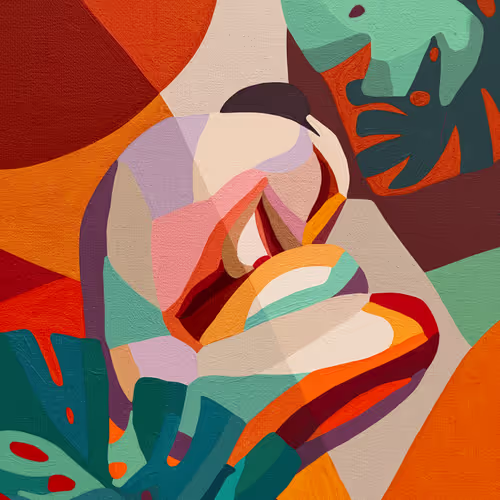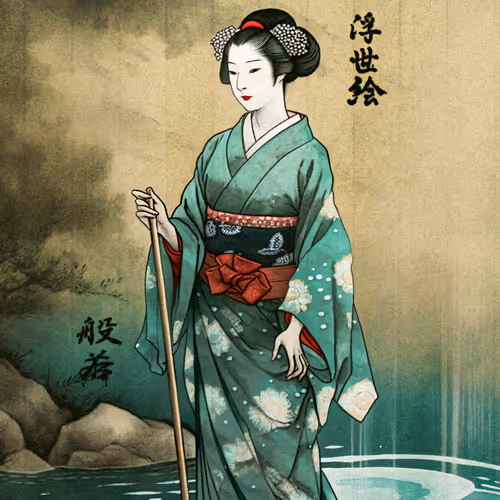Ukiyo-e (浮世絵, "pictures of the floating world"), commonly known as Japanese print, is a genre of woodcut and painting that thrived in Japan between the 17th and 19th centuries. Initially also known as "images of the sad world", due to the approach of more serious themes, over time the term Ukiyo-e ends up predominating due to the authors' option to make fantastic, beautiful visions, and in a way, escapist, out of reality, pornography, Flora.
In the early 17th century, the bourgeoisie of prosperous Edo (now Tokyo) began to seek entertainment in kabuki theaters and with the oirans and geishas of red-light districts. The term ukiyo ("floating world") described the hedonistic lifestyle of the time. Painted or printed, these works of plastic arts were appreciated by the bourgeoisie, rich enough to buy them to decorate their homes.
In 1842, portraits of courtesans, geishas and actors were banned. Portraits with these themes were partially resumed when they were later legalized. During the period of transformations suffered in Japan in the middle of the 19th century, when it became open to Western international influences (including photography and printing techniques), ukiyo-e went out of fashion. Such a style, however, would influence many of the expressionist painters of the second half of the 19th century, who, in the midst of the fashion for oriental porcelain, ended up receiving engraved engravings, like worthless wrapping paper, used to pack dishes and vases.
'Ukiyo-e 浮世絵' - Digital Illustration - Procreate | Photoshop | Texturized with special brushes | PNG 3584 x 5376 - 45 MB
@digitalhannya

